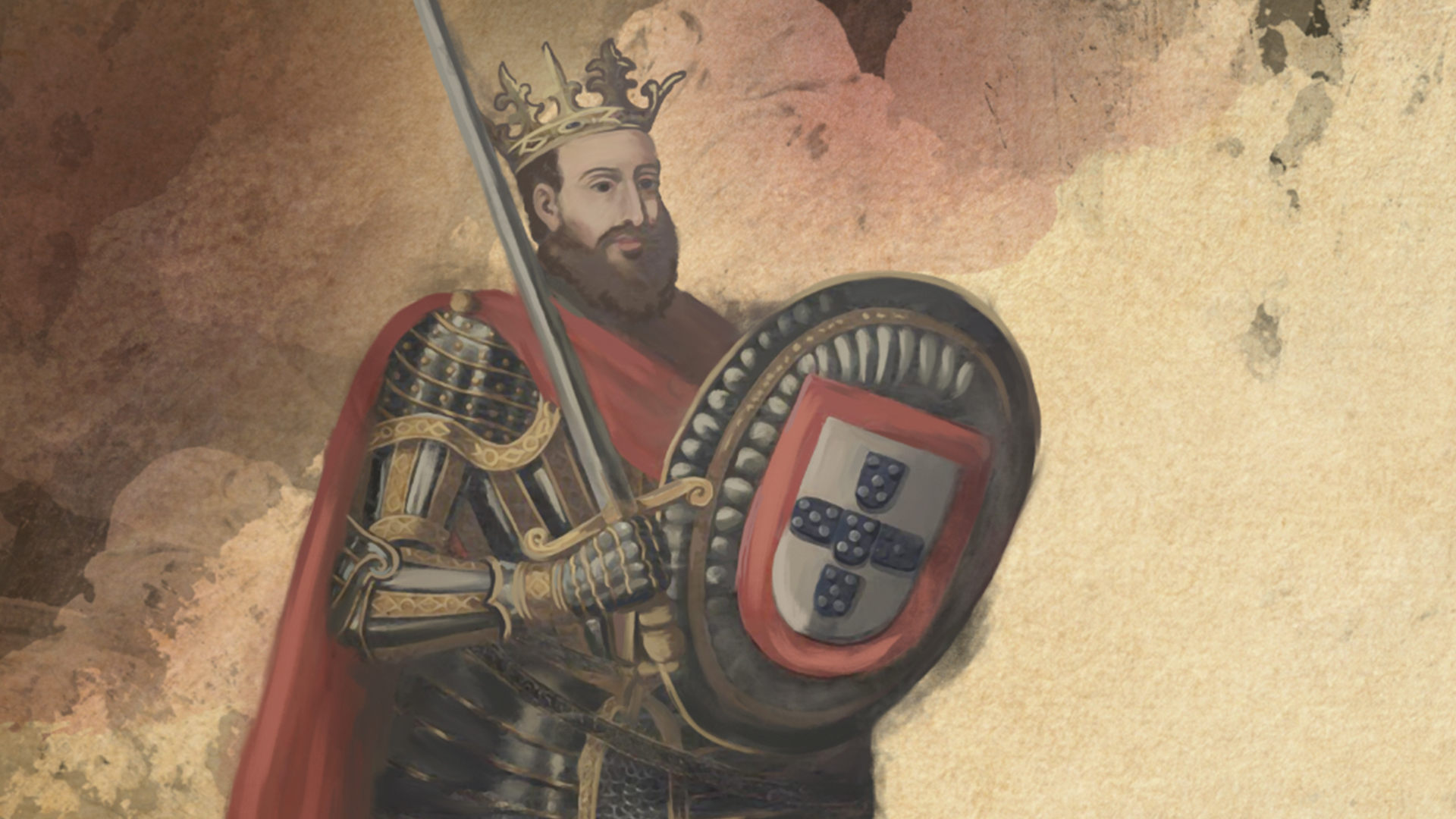D. Afonso Henriques was the founder and first king of Portugal, and became known in history as the Conqueror. Son of the Counts of Portucale, Henry of Burgundy, a knight who came to the Iberian Peninsula to help the King of León and Castile in the war against the Moors, and Teresa of León, bastard daughter of King Alfonso VI of León and Castile, he was presumably born in 1109, in Viseu, Coimbra, or Guimarães.
After Count D. Henrique’s death in 1112, the government of the County of Portucale (Condado Portucalense) was to be taken over by the Countess Teresa, presumably until the heir, D. Afonso Henriques, came of age.
Brought up under the influence of the County’s families, and with the unconditional support of the Archbishop of Braga, Paio Mendes, Afonso Henriques strengthened the county’s desire for independence by defeating his mother at the Battle of S. Mamede, on 24th June 1128, a moment that marked the beginning of the County of Portucale’s governance.
He was determined to conquer territories from the Moors, and established the county seat in Coimbra. He took the title of king after his victory at the Battle of Ourique in 1139, refusing to be vassal to his cousin, the King of León and Castile, Alfonso VII. This was followed by the conquest of Santarém (1147), Lisbon (1147), Évora (1165), and Beja (1162).
In 1147, following the conquest of the city of Santarém from the Muslims, King
Afonso Henriques donated the city to the Order of the Temple in return for military aid, which was immediately challenged by the Bishop of Lisbon, Gilberto de Hastings, who had ecclesiastical jurisdiction over the area. After several years of negotiations with the king, the Order of the Temple gave up Santarém in exchange for the Ceras Castle, on which the city of Tomar was to be built, which became the headquarters of the Knights Templar in Portugal.
After Pope Alexander III confirmed Portugal as a kingdom in 1179, and after 57 years of rule, King Afonso Henrique died on 6th December 1185 and was buried in the Monastery of Santa Cruz in Coimbra.
D. Afonso Henriques
